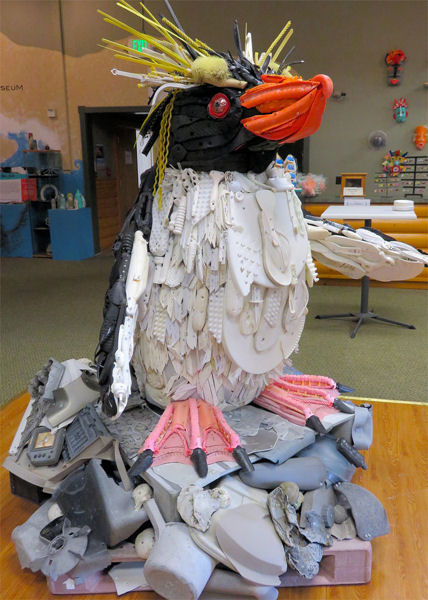
Using such art as this penguin, the Science Museum of Virginia (Richmond) fosters dialogue among all ages about the long-term hazards of litter. Photo courtesy of Washed Ashore and the Science Museum of Virginia.
Although located at least 1 hour from the nearest beach, the Science Museum of Virginia (SMV; Richmond) will feature visions of the ocean until September. A new exhibit unveiled last month, Washed Ashore: Art to Save the Sea, showcases 12 large-scale representations of iconic marine wildlife pieced together from one of the ocean’s deadliest predators — trash.
Old problems, new solutions
Ocean litter consists of a variety of discarded materials including plastic, glass, metals, and rubber. Some materials, such as common plastics, do not fully degrade but continue to break down into smaller pieces. Marine animals, such as sea turtles, birds, and other mammals, can be harmed when they mistake the debris for food and ingest it or become entangled in it, according to the National Oceanic and Atmospheric Administration.
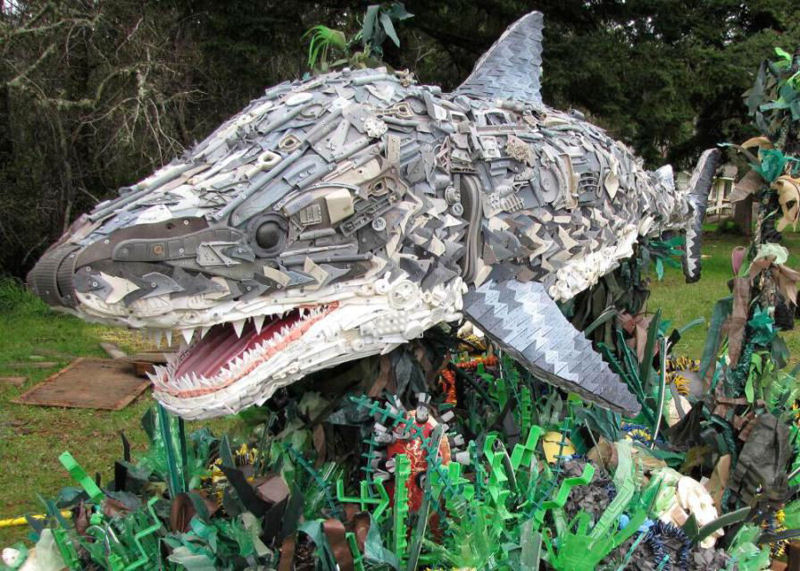
Included with the price of admission, Science Museum of Virginia visitors can view 12 large-scale Washed Ashore sculptures through September. Photo courtesy of Washed Ashore and the Science Museum of Virginia.
In response, the Washed Ashore community art project, based in Bandon, Ore., has coordinated the cleanup of local beaches for 7 years. During that time, about 10,000 volunteers have helped collect more than 16 Mg (18 tons) of marine litter. Volunteers have spent a cumulative 14,000 hours cleaning at least 483 km (300 mi) of beaches. Repurposed litter, 90% of which is plastic-based, has gone into the creation of more than 60 sculptures that have been shown in 10 states across the country.
Art to save the sea
Once collected litter has been washed, sorted, and prepared, a professional artist designs the piece and directs volunteers in arranging it around wire frames, gradually piecing together the likenesses of jellyfish, eels, whales, seals. Sculptors use about 95% of all litter collected for their art projects, according to the project website.
The sculptures then travel the country, appearing in museums, aquariums, and schools to educate audiences of all ages.
“One of the museum’s goals is to promote sustainability and resiliency in our community and beyond,” said Chrissy Caldwell, a spokeswoman for SMV. “The Washed Ashore exhibition aligns with that goal, so it was a natural fit for us to host the exhibition and continue that dialogue with our guests.”
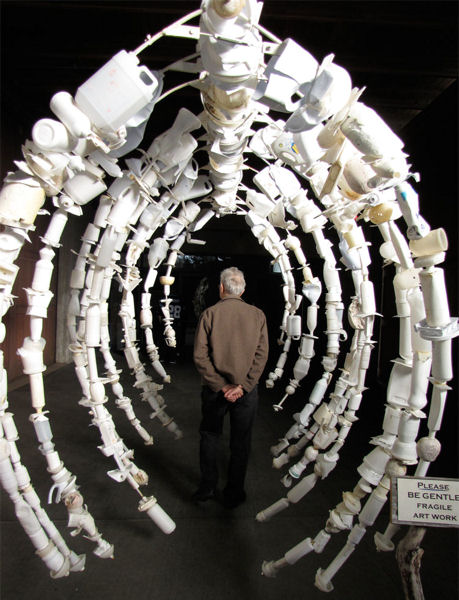
Some Washed Ashore sculptures are interactive, such as this whale skeleton that invites anyone to walk through and admire the piece from many angles. Photo courtesy of Washed Ashore and the Science Museum of Virginia.
The introduction of a dozen sculptures — some interactive, and most measuring more than 3 m (10 ft) — coincided with a series of lectures held throughout March at the museum. Each Wednesday night, the Climate Connections lecture series brought conservation and resiliency experts into the museum to speak about the consequences of climate change and how common, everyday actions can help to mitigate them.
This is not the first time that SMV has embraced unconventional tools to create dialogue around complex issues. “The museum frequently bridges the intersection of science and art in its experiences and programming,” Caldwell said. SMV’s Art Lab features the work of local artists as well as traveling exhibits that show science through art.
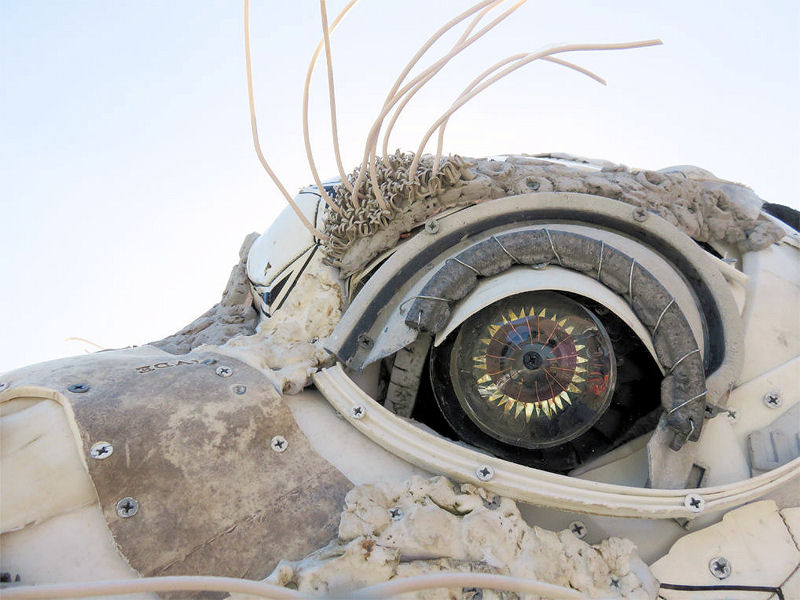
Finished sculptures tend to be large, often measuring more than more than 3 m (10 ft) in length or height. Photo courtesy of Washed Ashore and the Science Museum of Virginia.
Entrance to the “Washed Ashore: Art to Save the Sea” exhibit is included in the price of admission to the Science Museum of Virginia.
— Justin Jacques, WEF Highlights


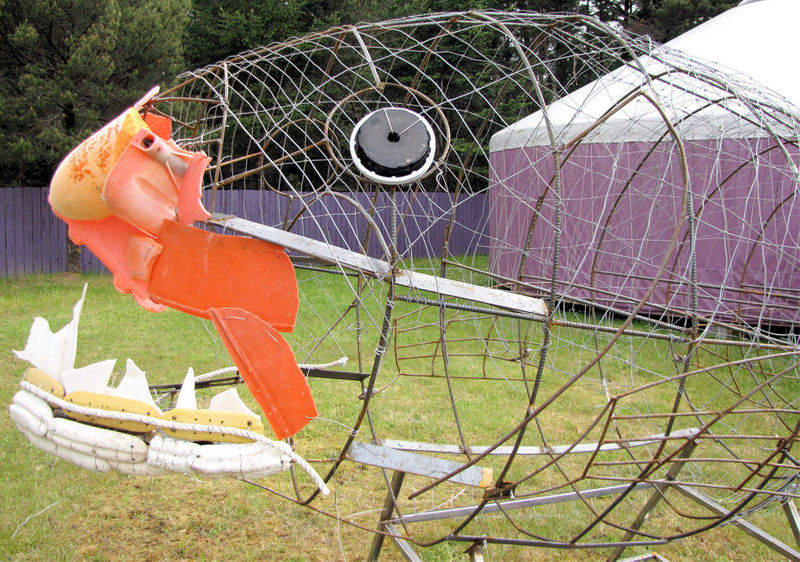
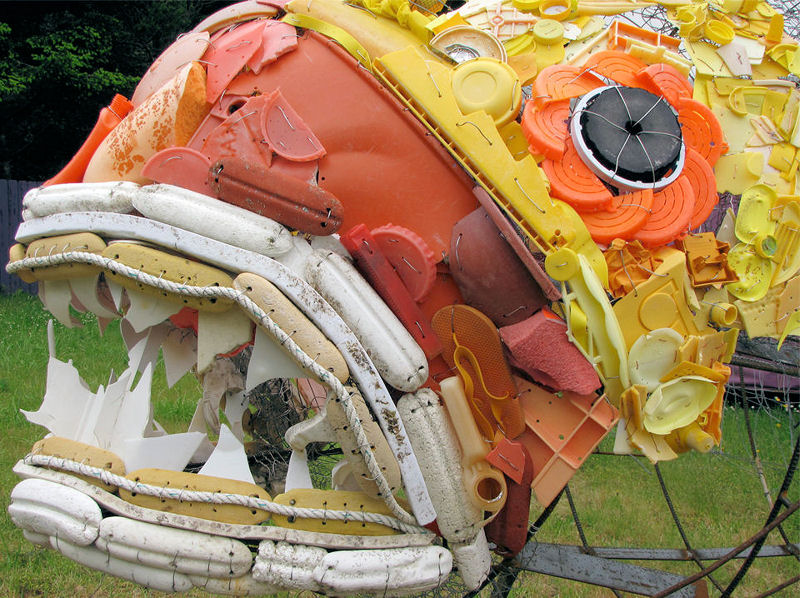






April 12, 2017
Featured